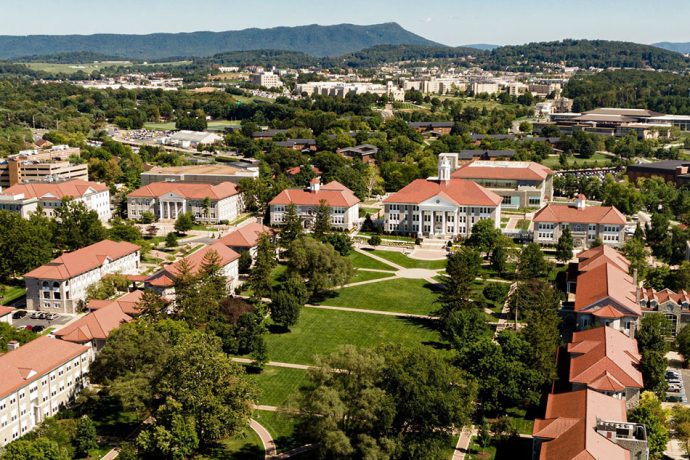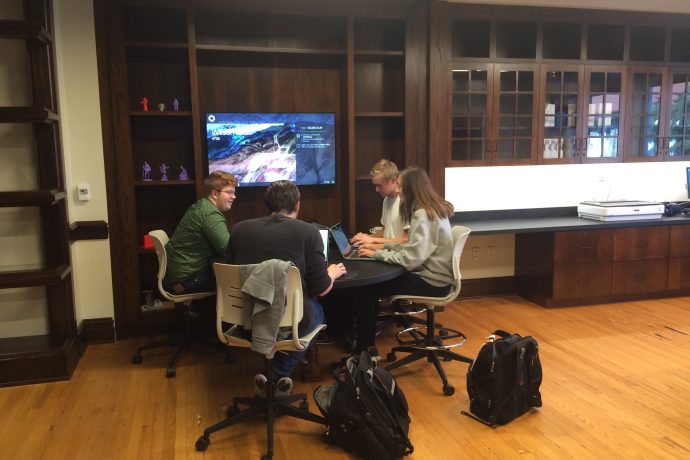- Enlist faculty support in a vision of where you want to be and understand that you cannot and will not please everyone.
- Support the work of the faculty who are making a difference and working hard on reform. This can include course releases, funding, training workshops, transparency about new policies and procedures, and administrative support for recruitment and outreach.
- Make use of disciplinary guidelines and resources to better understand how your discipline is changing.
- Be certain that the department’s aims and programs are articulated in ways that clearly align with the strategic goals and mission of the college and the university.
- Meet students where they are. Help faculty see how to get to where they want to go.
James Madison University Department of History

In 2019, Maura Hametz came to ACLS Associate Member James Madison University (JMU) as the Academic Unit Head of History. A good number of faculty were interested in working on curricular redesign, both in the department as well as across the campus.
The department used College surveys from students, who voiced a desire for concrete skills and more applied aspects of the History major. The department also looked at American Historical Association guidelines, including the Criteria for Standards in History/Social Studies/Social Sciences,” and past threads from the AHA Chairs’ discussion. This research helped them to see what others were doing and where the discipline of history might be headed. These documents helped them create what Hametz called a “Post-Wikipedia curriculum” focusing on skills, methods, and context, rather than dates and epochal coverage. After setting aside the previous, more traditional curriculum, they built on broader themes:
- Connected history: All majors take a 300-level course that emphasizes the “big picture” of global history and the way ideas spread across space and time.
- Applied history: All majors also take a 300-level course that applies historical thinking to today’s world and to skills outside the classroom. The relatively new History Studio, created in August 2019, provides opportunities for digital humanities work, and students can do applied history projects instead of traditional theses.
- Professional skills: In addition to opportunities made possible by the History Studio, the department invited professionals to give talks to students. They amplified the History Internship program by making the Internship Coordinator position a designated one in the department and including the oversight of internships part of the director’s course load (rather than strictly side service work.) The department also increased connections with offices across campus to enhance students’ opportunities and created ties with the career center.
- Methods: Departmental courses emphasize writing and communication. In particular, the required methods course and the Senior Honors Thesis course have shifted away from a concentration on the production of a thesis and towards the development of primary source literacy and skills—in other words, on historical literacy more than the mechanics of method. It encourages a broader definition of research and the dissemination of knowledge in either a thesis or non-traditional forms. Now taught by a greater range of faculty than previously, it continues to evolve and is flexible for faculty to teach using a shared set of objectives.
The entire process of creating and fully implementing the revised curriculum took three years. It began with the creation of an ad hoc committee; over the course of the first year, this group developed a new committee structure that emphasized faculty unity in a single committee that replaced geographically based separate curricular units. The department then elected a curriculum committee, comprised of both tenured and untenured faculty, who designed the new program. Separately, Hametz worked on consolidating and equalizing teaching loads, which freed faculty to teach (and develop) upper division undergraduate courses. Support for course development included departmental summer monies and funds from the university and college. Several faculty also worked with the Center for Faculty Innovation and the JMU Libraries to develop new courses with enhanced use of technology.

After the department completed its curricular redesign, Hametz worked “intentionally and patiently” to recruit students and to reach out to other chairs and faculty. This included steps like posting descriptions of their upper division courses on electronic signage in the classroom building several weeks before registration opened, and asking students at recruitment events to talk specifically about what they found exciting in new courses. The department also worked to make History a welcoming space for all students. For example, they created “History Huddles,” designated meetings each semester for faculty and students to come together over pizza to talk casually about upcoming courses, advising, and study abroad.
As a result of these changes and outreach to students, History saw an uptick in students. In July 2019, they had 208 majors; in March 2023, the numbers were up to 293. They also saw significant increases of History minors. Anecdotally, faculty noticed that they were teaching more students who belong to underserved populations, in particular women and first-generation students.

